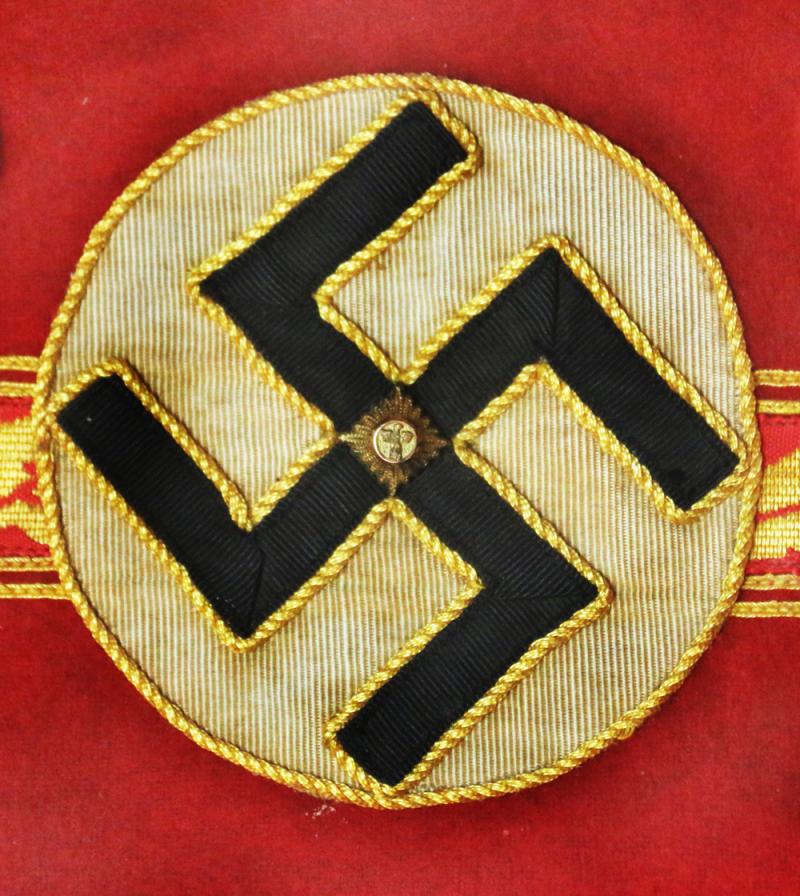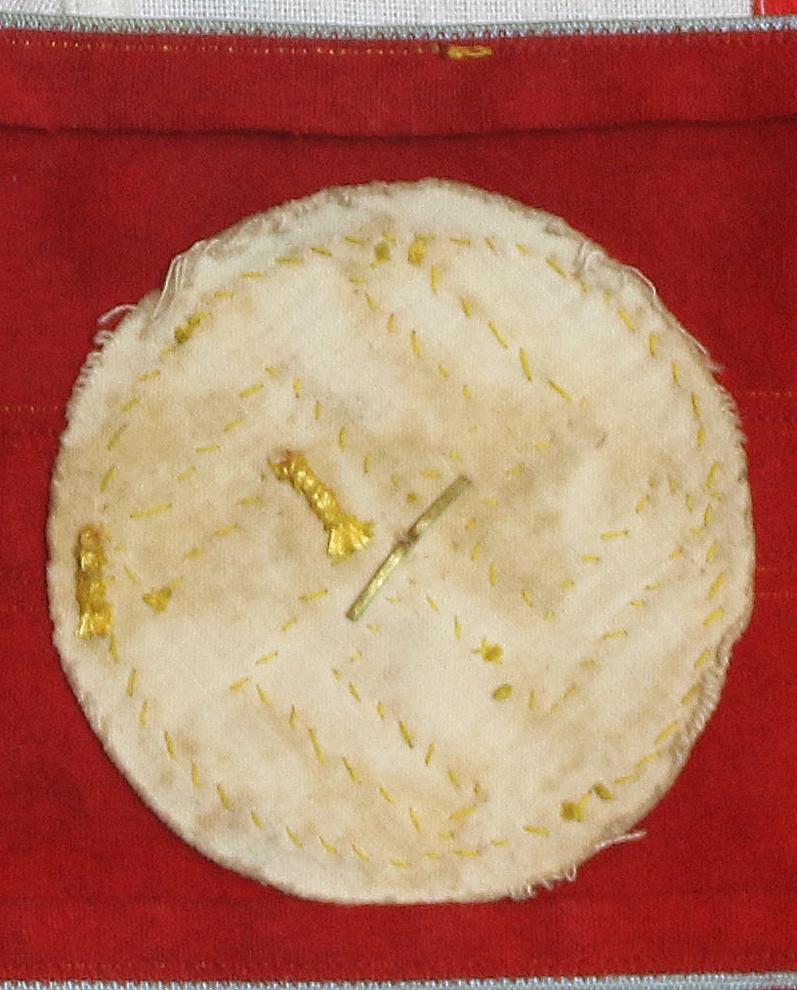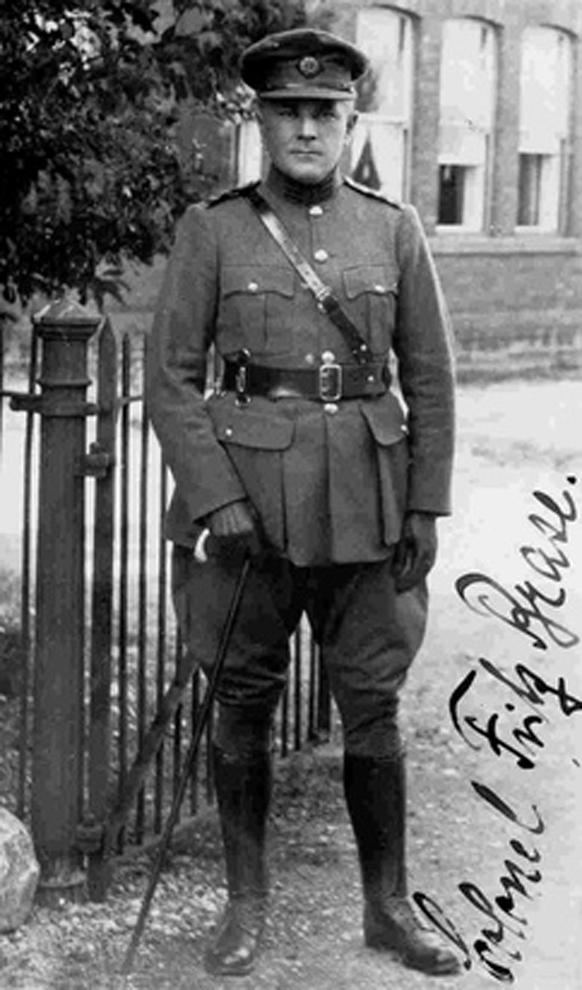Original Third Reich NSDAP, German 1930's National Socialist WW2 German Greatcoat or Tunic Armband of an Ortsgruppenleiter, Only 4 ranks Below Hitler In The Order of Seniority & Authority
In exceptional almost mint condition. Ortsgruppenleiter (Operational Regional Office Group Leader) was a Nazi Party political rank and title which existed between 1930 and 1945. The term first came into being during the German elections of 1930, and was held by the head Nazi of a town or city, or in larger cities, of a neighbourhood, for the purposes of election district organization. After 1933, through the process of Gleichschaltung, the position of Ortsgruppenleiter evolved into the Nazi leader of a large town or city or of a city district. The rank of Ortsgruppenleiter was originally the fourth tier in the Nazi Party hierarchy after the Führer, Reichsleiter, Gauleiter, and Kriesleiter
As with Gauleiters and Kriesleiter they were appointed by Hitler personally.
The Nazi Party, officially the National Socialist German Workers' Party (German: Nationalsozialistische Deutsche Arbeiterparte or NSDAP), was an extreme socialist political party in Germany active between 1920 and 1945 that created and supported the ideology of Nazism. Its precursor, the German Workers' Party (Deutsche Arbeiterpartei; DAP), existed from 1919 to 1920. The Nazi Party emerged from the extremist German nationalist, racist and populist Freikorps paramilitary culture, which fought against the communist uprisings in post–World War I Germany. The party was created to draw workers away from communism and into völkisch nationalism. Initially, Nazi political strategy focused on anti–big business, anti-bourgeois, and anti-capitalist rhetoric, which was later downplayed to gain the support of business leaders. By the 1930s, the party's main focus shifted to antisemitic and anti-Marxist themes. The party had little popular support until the Great Depression, where worsening living standards and vast unemployment drove Germans into political extremism.
The NSDAP had supporters and branches throughout other European countries, for example in Ireland They operated like a normal political party, collected subscriptions, kept membership files and reported regularly to party headquarters. The difference with the German Nazi Party (NSDAP) in 1930s Ireland, however, was that its headquarters was not in Dublin but in Berlin. The party’s membership—numbering from 50 to 100, depending on whether visitors are included—owed their loyalty to Adolf Hitler. Their Christmas parties were held at the Gresham Hotel, while other social events took place at the Red Bank restaurant in D’Olier Street and at the Kilmacurragh Park Hotel in County Wicklow.
Fritz Brase, was the first Ortsgruppenleiter of Ireland
But who were these Germans and Austrians who rallied to the Nazi Party colours in pre-war Ireland? The first Ortsgruppenleiter, or branch leader, in Dublin was a Prussian bandsman called Fritz Brase, who in 1923 became director of the new Irish army’s school of music, with the rank of colonel. Brase—who rearranged many traditional Irish jigs and reels to sound like thundering Prussian martial pieces—got into hot water in the early 1930s when he wrote to the army’s chief of staff, Maj.-Gen. Michael Brennan, seeking permission to set up a branch of the Nazi Party in Dublin. Brase was either unaware of or chose to ignore the obvious conflict of interest that his request implied—an Irish army colonel swearing loyalty to the Third Reich—but Brennan got the point. He told the German to choose the party or the army, but Brase wanted the best of both worlds. Records held in Berlin show that he joined the Nazis in April 1932, just a month before his 57th birthday. Brase appears to have tried to keep his party membership a secret from the Irish army, but pressure from the military’s top brass is the most likely reason why he relinquished his post as local Nazi leader in 1934.
The latter report was likely written by the editor of the Irish times, Robert Smylie, a German speaker, also an attendee of the funeral of the German diplomat, Robert Wenzel.
"Christian Sauerzweig, mentioned some of Brase's activities to his superior, who in turn informed the head of Office of the Directorate of Intelligence, than named "G2", that at least twice in early September 1939 Brase burned papers in the boiler house of the school of music, and that, in April 1940, on the occasion of the funeral of the German diplomat, Robert Wenzel, that he and Brase wore their military uniforms and Brase gave the Nazi salute at the graveside. Besides these reports, a military intelligence file was kept on Brase also notes that he sent Adolf Hitler birthday greetings in 1939 by telegraph to the Reich Chancellery
Shown in the gallery a full uniform for illustration and context purposes only, we just offer the armband for sale.
Code: 24903






